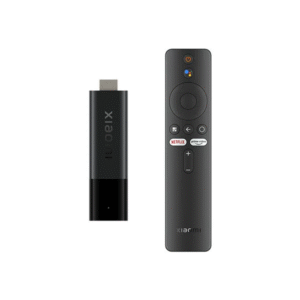Ensuring good indoor air quality in the contemporary home environment is paramount for maintaining health and comfort. Home-ventilators have become crucial in achieving this goal, providing a dependable solution for circulating fresh air. These devices help combat the adverse effects of indoor pollutants and allergens, making them essential rather than optional. This blog delves into the importance of home ventilator, explores the various types available, and offers guidance on selecting the right system. Additionally, it covers essential aspects such as maintenance, associated costs, and emerging trends in home ventilation systems.
Why Home-ventilators Are Essential for a Healthier Living Space
Home-ventilators are indispensable in creating a healthier living space by ensuring the continuous circulation of fresh air indoors. As modern homes become more energy-efficient and airtight, natural airflow is significantly reduced, accumulating indoor pollutants. These devices effectively lower humidity levels, thereby preventing the growth of mould and the persistence of unpleasant odours.
Additionally, they play a crucial role in alleviating respiratory issues by reducing the concentration of allergens and pollutants such as dust mites, pet dander, and pollen. Using home-ventilators contributes to improved sleep quality and overall well-being, making them a vital component of any modern household focused on health and comfort.
The Impact of Home Ventilation on Indoor Air Quality
The Impact of Poor Ventilation on Indoor Air Quality
Poor ventilation can severely impact indoor air quality by allowing pollutants to accumulate. These pollutants include carbon dioxide, volatile organic compounds (VOCs), and particulate matter from sources like household products, cooking activities, and external pollutants entering the home.
When air circulation is insufficient, the concentration of these contaminants increases, which can lead to adverse health effects such as allergies, respiratory issues, fatigue, and discomfort. Poor air quality can also exacerbate symptoms for individuals with asthma or other pre-existing respiratory conditions, making it even more critical to ensure proper ventilation.
Role of Home-Ventilators in Removing Contaminants
Home-ventilators are designed to address indoor air quality concerns by replacing stale air with fresh outdoor air. This continuous exchange of air helps remove harmful substances, ensuring cleaner indoor environments. By diluting contaminants, ventilators lower their concentration and reduce exposure, improving both short-term and long-term health outcomes for residents.
These systems are particularly beneficial in homes with limited natural ventilation due to sealed windows or tightly insulated spaces. Advanced models may also include features like air filtration, which traps dust and allergens for an even greater improvement in air quality.
Regulating Temperature for Better Comfort
Ventilation systems balance temperature levels and play an essential role in maintaining indoor comfort. Certain home areas can experience uneven heating or cooling without proper airflow, leading to discomfort for occupants. Home-ventilators facilitate consistent airflow, preventing hot and cold spots and promoting a more uniform temperature distribution. This balanced air circulation reduces the reliance on HVAC systems for temperature control, potentially lowering energy usage and costs.
Humidity Control to Prevent Moisture Problems
Adequate ventilation is key to managing indoor humidity levels, which directly affect air quality and the structural integrity of a home. High humidity can lead to excessive moisture, creating the perfect conditions for mould and mildew to grow. These fungi release spores into the air, triggering allergies and worsening respiratory conditions.
On the other hand, overly dry air can cause skin irritation and discomfort. Home-ventilators help maintain ideal humidity levels by expelling moisture-laden air and introducing drier external air, contributing to a healthier and more comfortable living space.
Creating a Healthier and More Pleasant Environment
Home-ventilators enhance indoor living conditions by ensuring constant and balanced air circulation. They improve air quality by removing pollutants and creating an environment free of unpleasant odours and stale air. This enhanced airflow supports better sleep, increased productivity, and general well-being for residents.
As an added benefit, modern home ventilation systems often come with customizable settings that allow users to tailor airflow to their preferences, offering an optimal blend of functionality and comfort.
Different Types of Home-ventilators: Which One Is Right for You?
Home-ventilators come in various forms, each tailored to meet specific requirements. Mechanical systems, such as heat recovery ventilators (HRVs) and energy recovery ventilators (ERVs), are particularly suited for energy-efficient homes, as they help retain heat or coolness while refreshing the indoor air. Exhaust fans are another common type, ideal for expelling odours and moisture from confined spaces like kitchens and bathrooms.
Whole-house ventilation systems offer a more comprehensive solution, distributing fresh air throughout the home. When choosing a home-ventilator, considerations should include the size of the living space, the specific air quality needs, and the budget allocated for installation and maintenance.
The Role of Home-ventilators in Reducing Allergens and Pollutants
Home-ventilators are pivotal in reducing indoor allergens and pollutants, providing considerable benefits for individuals with allergies or respiratory conditions. These systems supply a continuous stream of filtered fresh air, which helps lower the concentration of common airborne particles such as dust mites, pet dander, and pollen.
Ventilators equipped with high-efficiency particulate air (HEPA) filters offer extra protection, capturing even finer particles and thus enhancing the overall air quality indoors. By maintaining an optimal level of ventilation, these devices contribute to a cleaner and healthier living environment, minimizing the presence of irritants that can exacerbate respiratory issues.
Maintenance and Care of Home-ventilators
Regular upkeep is essential to ensure home ventilation systems operate efficiently and maintain a prolonged lifespan. A well-maintained ventilator performs at its optimal capacity and contributes significantly to healthier indoor air quality. Following a series of maintenance practices that address common issues and prevent long-term damage is essential to keep the system functioning smoothly.
One of the fundamental tasks in home-ventilator maintenance is routinely cleaning or replacing filters. Filters are crucial components that trap dust, allergens, and other particles, ensuring clean air circulation. Over time, these filters can become clogged with debris, reducing airflow and straining the ventilator’s motor. Cleaning the filters regularly or replacing disposable ones per the manufacturer’s recommendations is key to maintaining optimal performance. Neglecting this step can result in decreased efficiency and even potential system malfunctions.
Inspecting the air inlets and outlets is another vital aspect of maintenance. Any obstructions, such as dust buildup, debris, or even outdoor leaves, can hinder the ventilator’s ability to effectively draw in and expel air. Periodic inspections and timely removal of these blockages ensure proper airflow and system functionality. This step is crucial in areas with high dust levels or outdoor debris.
Another essential practice is to check the overall functionality of the ventilator’s components. This includes examining the motor, fans, and electrical connections. Ensuring all parts are working correctly helps avoid potential breakdowns and reduces the likelihood of costly repairs. Identifying and addressing any unusual noises, vibrations, or signs of wear and tear early can prevent minor issues from escalating into major problems.
Dust and debris can also accumulate within the system’s internal parts over time, reducing its efficiency. To keep the ventilator’s interior operating at peak performance, it is regularly cleaned. This can be done by carefully removing the housing and gently wiping or vacuuming the components, following the manufacturer’s instructions. Keeping the system clean not only improves performance but also extends the ventilator’s overall lifespan.
Proper storage, such as seasonal breaks, becomes essential to maintenance when the ventilator is not in use. Storing the ventilator in a dry, dust-free environment helps to protect it from corrosion, moisture damage, and dust accumulation. Before storage, cleaning the system thoroughly and ensuring all parts are dry is advisable to prevent mould or mildew formation.
Lastly, it is highly recommended that professional maintenance checks be scheduled at least once a year. Expert technicians can perform a comprehensive inspection, identify potential issues, and provide repairs or tune-ups that might be beyond the scope of routine home maintenance.
By regularly performing these maintenance tasks, homeowners can ensure their home-ventilators continue to provide clean, fresh air and maintain energy efficiency for years. Routine upkeep safeguards the system’s functionality and contributes to a healthier and more comfortable indoor environment. Investing time in proper maintenance is a small effort that yields long-term benefits.
Understanding Home-ventilator Costs: What You Need to Know before You Buy
Several factors come into play when evaluating the home-ventilator cost. Basic models, which offer essential functions, tend to be more affordable, whereas advanced systems equipped with features like heat recovery or energy recovery command a higher price. The initial purchase price is just one aspect; it is also crucial to account for the long-term operational costs, including energy consumption and regular maintenance. Although more costly upfront, advanced units can provide significant savings on energy bills over time due to their efficiency. Additionally, potential health benefits should be considered as they justify the investment in a higher-end system.
Common Challenges with Home-ventilators
Like all mechanical systems, home-ventilators can encounter various challenges that may affect their performance. One common issue is noise, which can be caused by loose components, wear and tear, or improper installation. Addressing noise issues typically involves tightening loose parts, lubricating moving components, or ensuring the unit is securely mounted.
Reduced efficiency is another challenge, often stemming from clogged filters or obstructed airways. Regular maintenance, including cleaning and replacing filters, is crucial to optimal performance.
Mechanical failures can also occur, ranging from motor issues to problems with control systems. These failures often require professional diagnosis and repair to restore functionality. Regular inspections can help identify potential issues early, preventing more severe damage.
Another challenge is ensuring the system is correctly balanced, as imbalanced airflow can result in insufficient ventilation in some areas. Proper installation and routine adjustments are key to maintaining balanced airflow throughout the home.
Additionally, issues related to energy consumption can arise, particularly with older models that may not be as energy-efficient as newer systems. Upgrading to a modern home-ventilator with advanced features can help mitigate high energy costs.
Promptly address these challenges promptly through regular maintenance and professional assistance care so that home-ventilators operate effectively and efficiently.
Future Perspectives and Developments
Future advancements in home ventilation systems are set to revolutionize how indoor air quality is managed. Emerging technologies focus on increasing energy efficiency and integrating with smart home systems, allowing users to monitor and control ventilation through mobile devices and automated systems. Enhanced filtration techniques are also on the horizon, aimed at capturing even smaller particles and more effectively removing pollutants from the air.
Additionally, there is growing interest in systems that can adapt to real-time environmental conditions, adjusting ventilation rates based on air quality metrics. These innovations offer more personalized and effective solutions for maintaining optimal indoor environments.
Summary
Home ventilator enhances indoor air quality and ensure a comfortable living environment. These systems facilitate continuous fresh air circulation, crucial for reducing indoor pollutants and allergens. Various home-ventilators, including heat recovery ventilators (HRVs), energy recovery ventilators (ERVs), exhaust fans, and whole-house systems, cater to different needs and preferences. Regular maintenance, such as cleaning or replacing filters and inspecting components, is essential for optimal performance. Costs can vary depending on the type of system and its features, with advanced units offering long-term energy savings. Emerging technologies promise further to improve efficiency and integration with smart home systems.
FAQs
What types of filters are most effective in home-ventilators?
HEPA filters are among the most effective home ventilation systems. They capture fine particles such as dust, pollen, and pet dander. These filters are particularly beneficial for improving indoor air quality and providing relief for individuals with allergies or respiratory conditions.
How often should home-ventilator filters be replaced?
The frequency of filter replacement depends on the usage and the manufacturer’s recommendations. Filters should be replaced every 3 to 6 months to maintain optimal performance and ensure the system operates efficiently.
Can home ventilator helps with humidity control?
Yes, many home ventilator is designed to regulate humidity levels. By balancing the indoor humidity, these devices prevent the growth of mould and mildew, contributing to a healthier living environment. Proper humidity control also helps maintain the integrity of household furnishings and building materials.
Are home-ventilators energy-efficient?
Modern home-ventilators, especially those equipped with heat recovery or energy recovery features, are designed to be energy-efficient. These systems minimize energy loss by capturing and reusing heat or coolness from the exhaust air, thereby reducing the household’s overall energy consumption.
What should be considered when installing a home-ventilator?
Several factors should be considered to ensure the effective installation of a home-ventilator. The size of the room or the entire home, airflow requirements, and budget are crucial. Additionally, the specific air quality needs of the household, such as the presence of allergens or humidity control, should influence the choice of system. It is also essential to ensure that a professional installs to avoid noise, inefficiency, or imbalanced airflow issues. Proper installation and regular maintenance are key to maximizing the benefits of a home-ventilator and ensuring its long-term performance.






